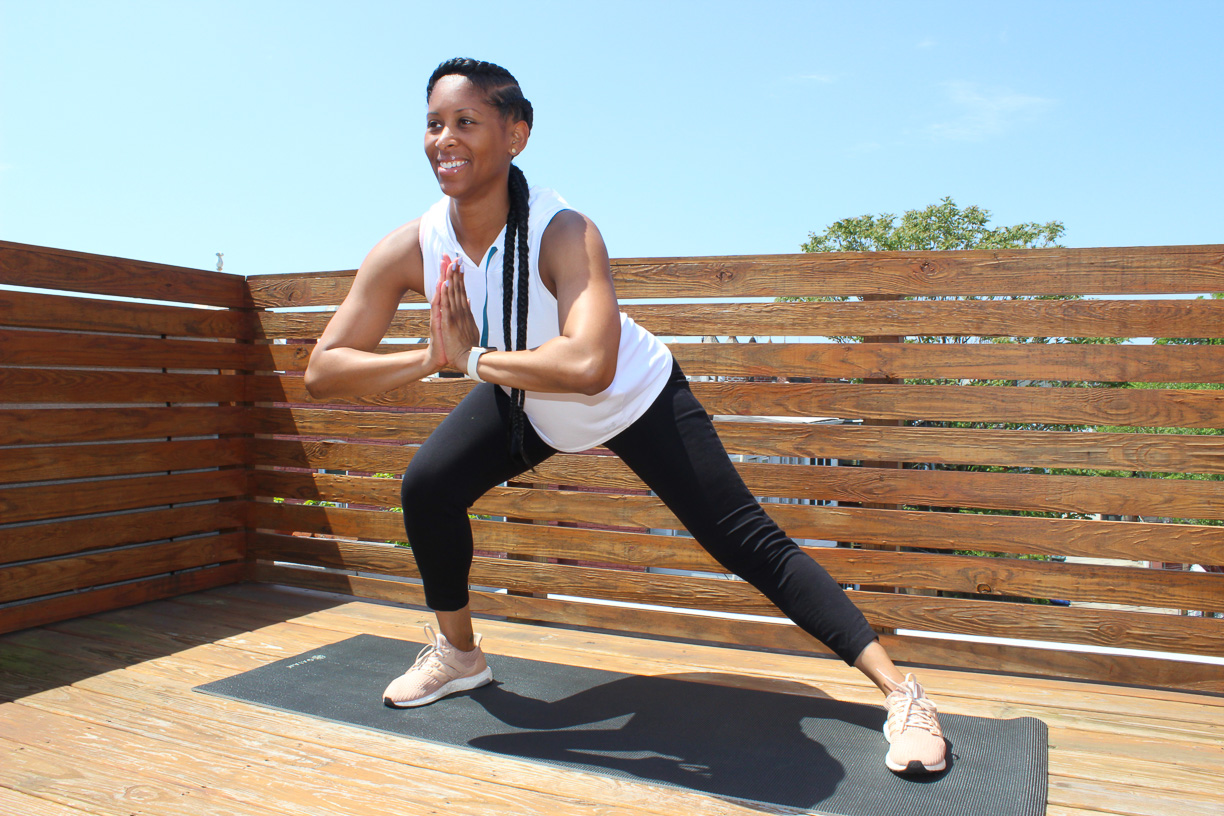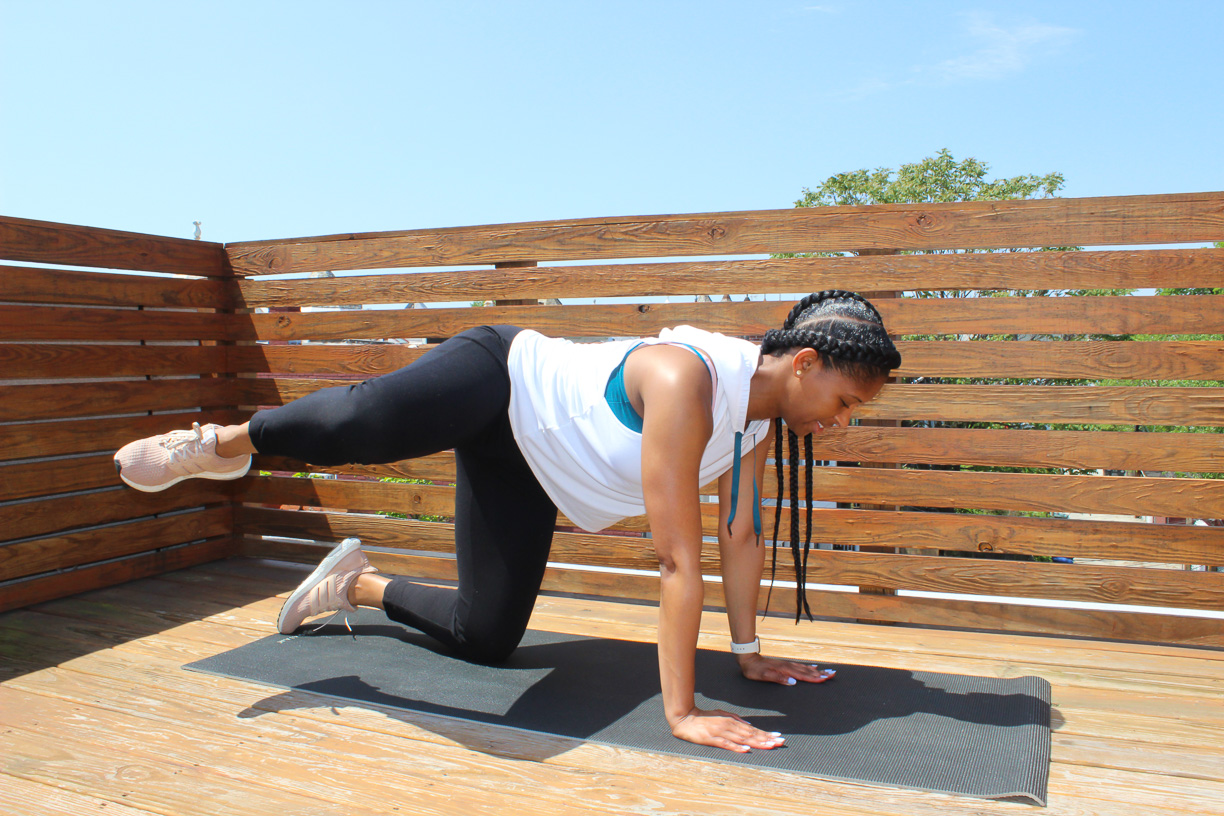Piriformis Syndrome: When Running is a Real Pain in the Butt
By Alison Staples, Physical Therapist Assistant and RRCA-Certified Long-distance Run Coach
Piriformis syndrome, also known as a huge ‘pain in the butt’, has plagued me for a little more than a year. It presents as a sharp pain in my glutes when I’m sitting or attempting to lengthen my stride during a run. This is not to be confused with sciatica pain, which often results from a herniated disk), piriformis pain isn’t always relieved simply by stretching and strengthening. This is a special concern for female runners since women are six times more likely than men to experience piriformis syndrome, due to the biomechanics of a woman’s pelvis.
Piriformis Syndrome and the Sciatic Nerve
The Piriformis is a muscle located deep within the gluteals. It runs from the sacrum to the hip and is close to the sciatic nerve. Its main function is to stabilize, laterally rotate, abduct and partially extend the hip.
Medical News Today explains, “When the piriformis muscle causes irritation to the sciatic nerve, it may cause pain in the hip and buttocks.”
Piriformis syndrome may be caused by tightness, adhesions or spasms of the piriformis muscle which press on the sciatic nerve during overuse activities such as distance running. Symptoms also include burning, tingling and shooting pain, especially when sitting. Most commonly, an irritated piriformis causes pain in the rear buttocks that travels down the leg in the area of the sciatic nerve.
How to Treat Piriformis Syndrome
There are multiple ways to treat this debilitating pain caused by Piriformis Syndrome:
FOR MILDER SYMPTOMS
if you’re experiencing mild symptoms, strengthening and stretching the gluteus medius is encouraged. The following exercises and stretches can help relieve mild symptoms of Piriformis syndrome:
Clamshells
Piriformis stretch
Pigeon Pose
Rested sidestepping
Fire hydrants
Hamstring stretch
Pelvis alignment performed by a physical therapist is also recommended (not pictured)






FOR AGGRESSIVE SYMPTOMS
Personally, when my symptoms are aggressive, I stretch, use a tennis ball to roll on my muscles, foam roll, and perform all the trigger point releases I knew how to do. However, none of that alleviates the pain of this issue quite like flossing. And no, I’m not talking about the Floss dance! We’re talking nerve flossing—sciatic nerve flossing to be exact.
Nerve Flossing
When the sciatic nerve becomes trapped, it moves along the muscles and bones causing scar tissue to build up along the nerve fiber. This can create discomfort when you run, as the scarred nerve doesn’t glide smoothly, and flossing is required to break down the scar tissue to improve mobility.
Seated Sciatic Nerve Flossing - Sit in a comfortable, supportive chair with back straight and shoulders down and relaxed. Start with knees bent at 90 degrees and both feet flat on the floor. Then, slowly straighten the injured leg. Slowly lower your leg back to the starting position and complete 15 leg raises. You may also try pointing and flexing your foot, so your toes point up to the ceiling, to increase the stretch. This can be done up to five times a day for maximum benefit, as your discomfort allows.
Sciatic Nerve Flossing With Elevated Leg - Lie flat on your back with the heel of the injured leg resting on a low table or footrest. Keep the elevated leg straight, slowly point and flex the foot, making sure your buttocks stay on the floor. You should not feel any pain. Repeat as many times as you can.
With proper maintenance, you can manage this “pain in the butt” we call piriformis syndrome. As with any injury or ongoing syndrome, if pain persists or worsens, it is best to seek medical attention from a physician or physical therapist to ensure the problem is not something more serious.
-
Note: Medical Disclaimer - Note that while the author is a physical therapist assistant, the above information is not intended as medical advice and does not replace the recommendation of a physician or other medical professional. Always seek the advice of your physician before trying these or any sort of treatment for your injuries. View the full medical disclaimer in RUNGRL’s terms of use.
Alison Staples
Contributor
Alison is a Physical Therapist Assistant, specializing in neurophysiology. Picking up running after she turned 30, Alison is a RRCA-certified long distance run coach, and coaches for Charm City Run, and Team in Training with the Leukemia and Lymphoma Society. When she's not running, she can be found at Trader Joe's, hanging out by the free coffee.












